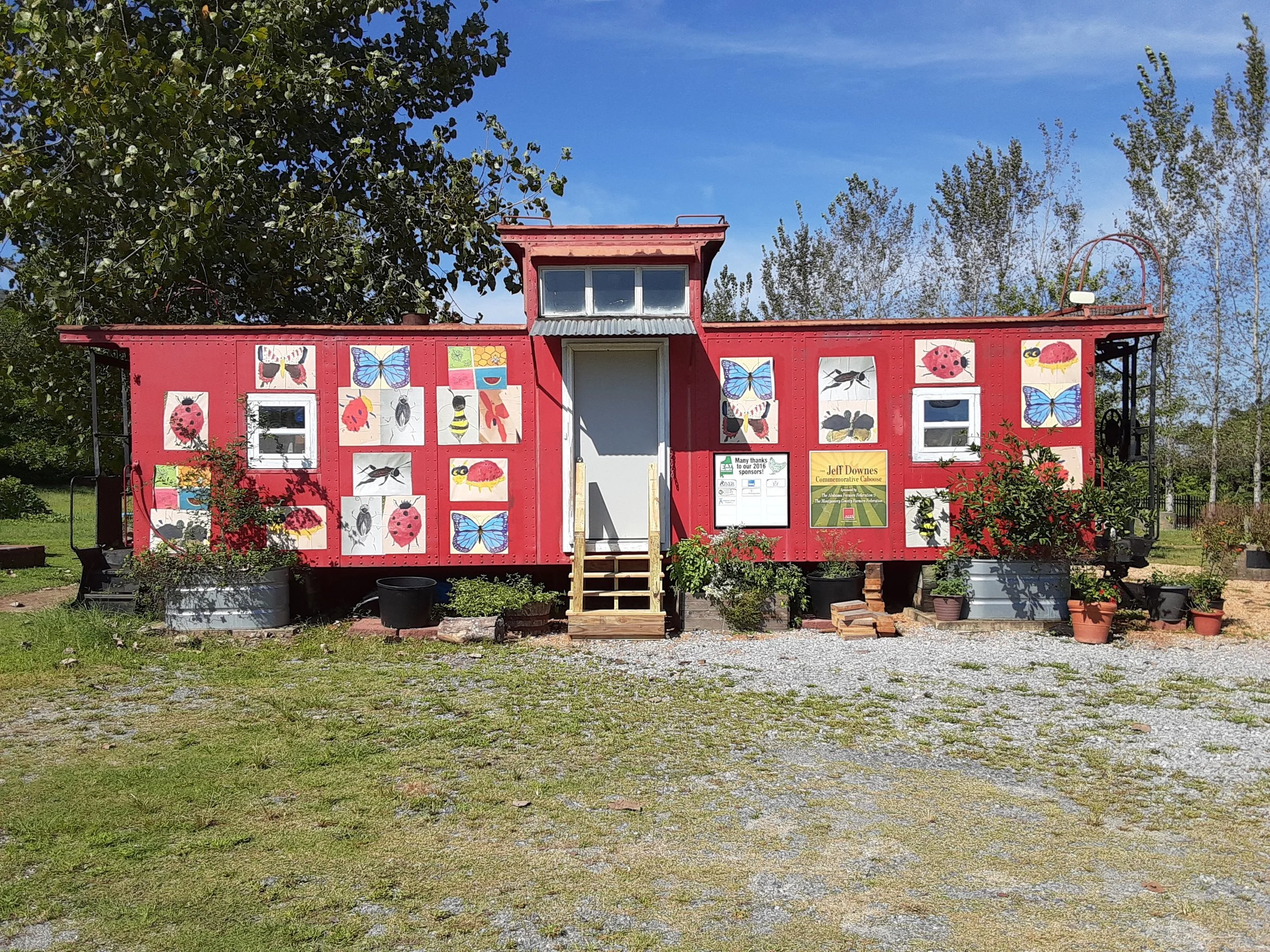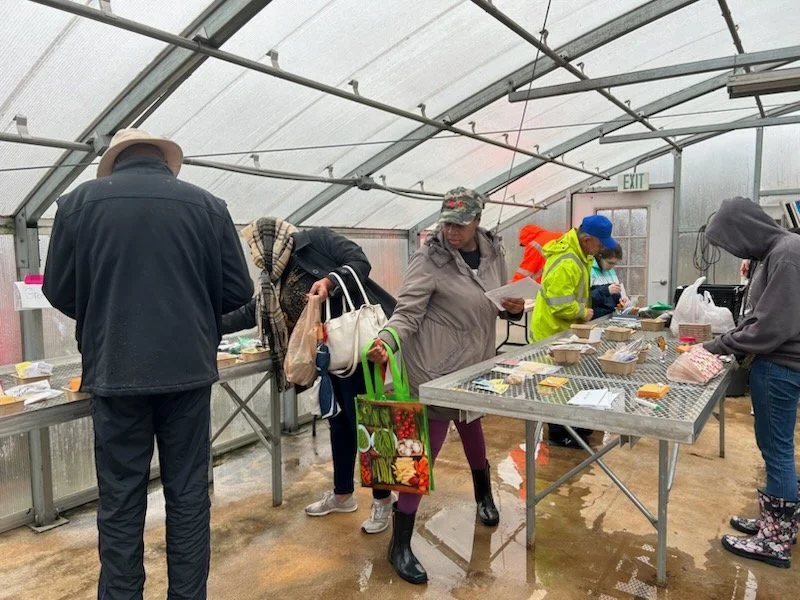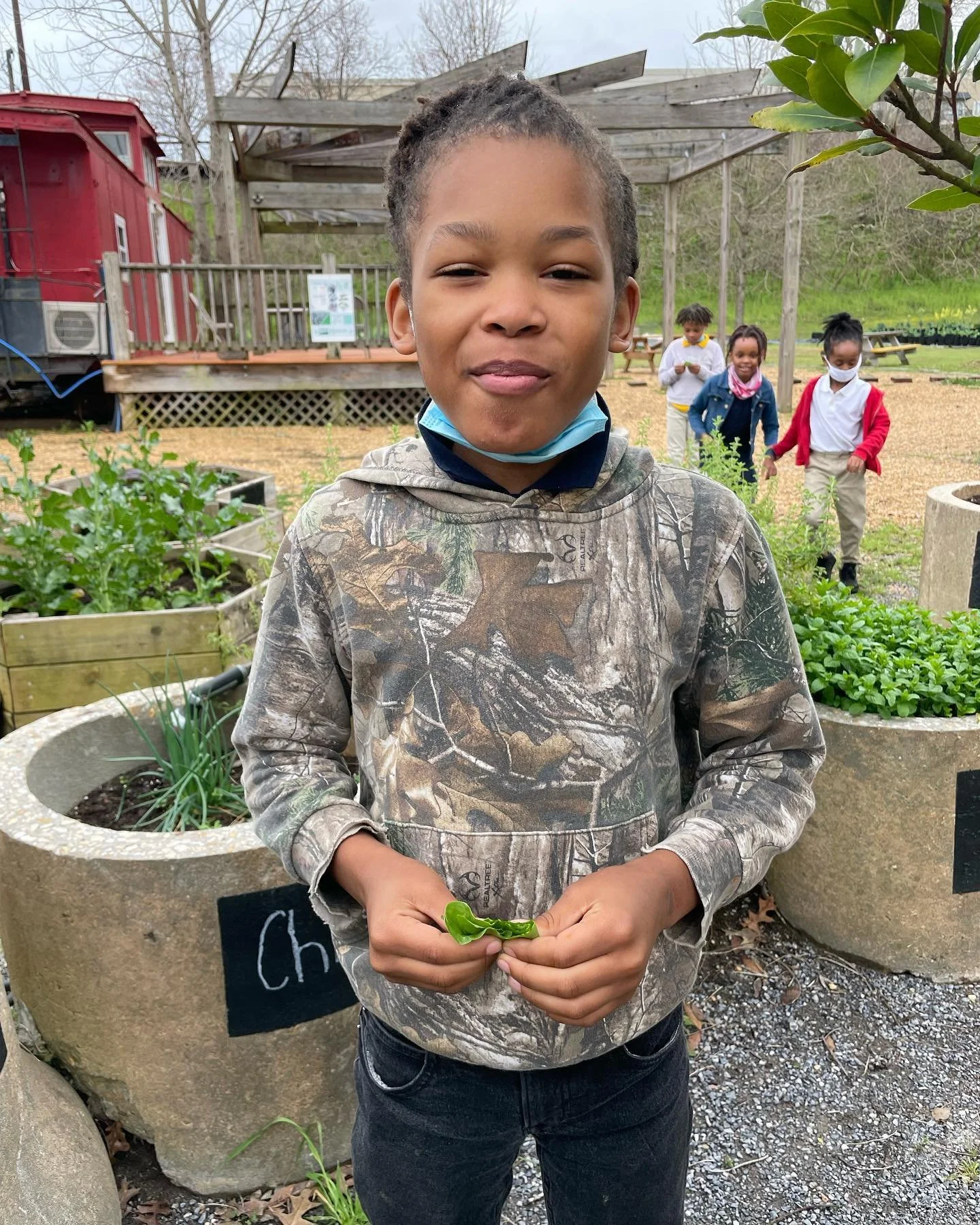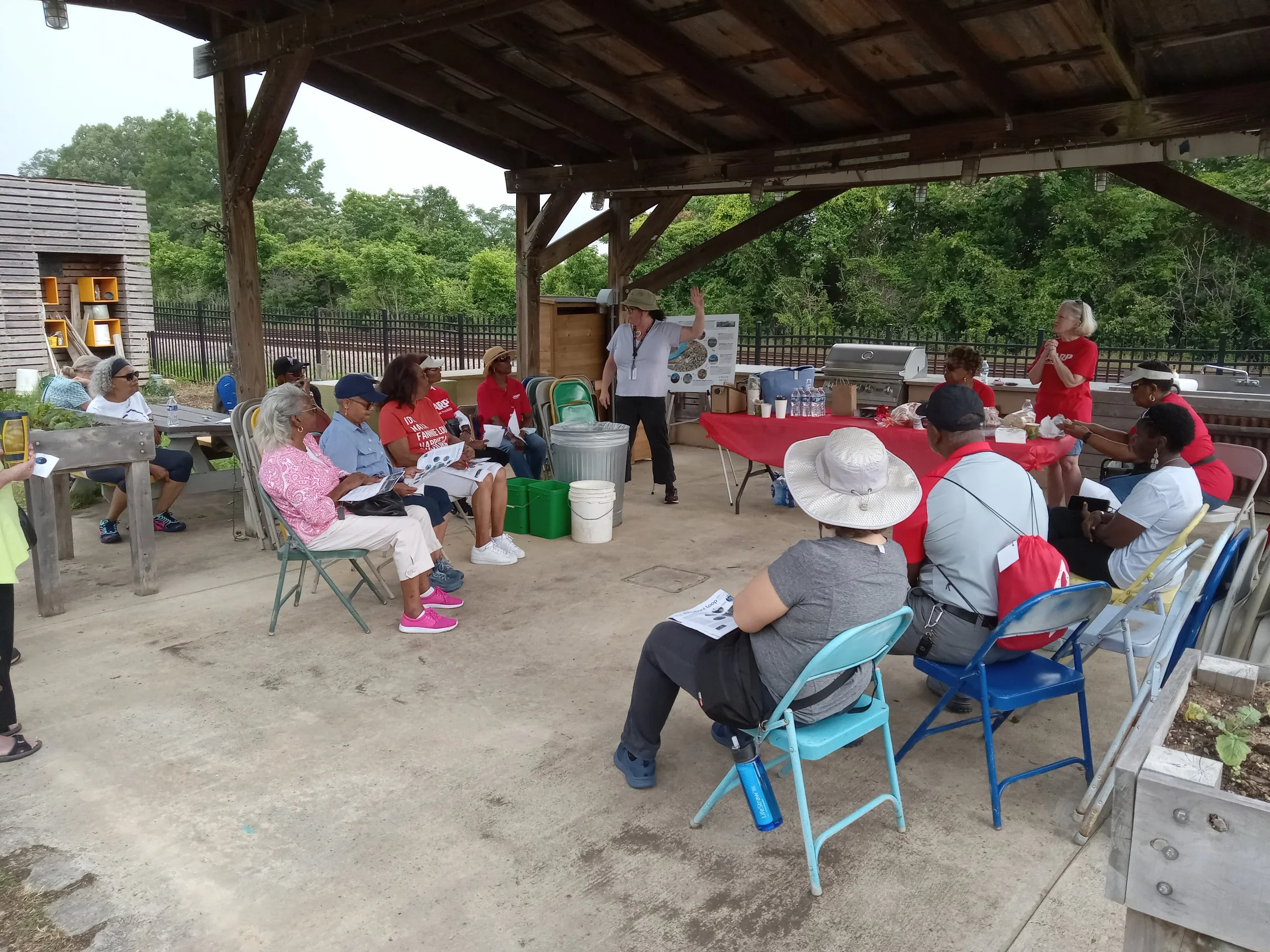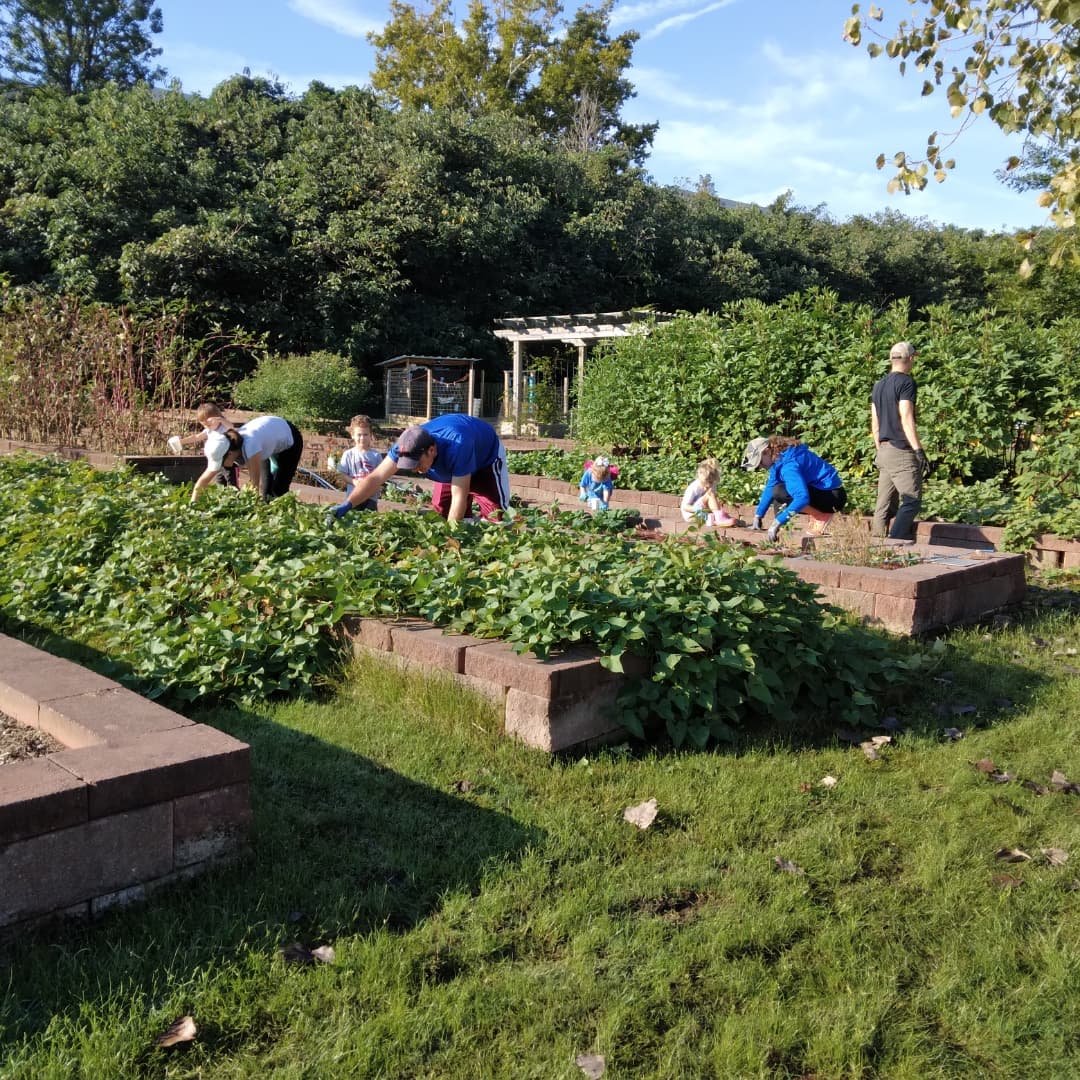Your Virtual Farm Tour
E.A.T. South is the City of Montgomery’s urban teaching farm. We are a city park, and you are welcome to wander through the farm whenever the gate is open. The farm is fairly small, but we have so much going on! The following guides you in a circle through different sections of the farm starting at the caboose. Email Farmer Caylor and let us know what you think.
E.A.T. South exists because of volunteer support and contributions from the community. If you would like to see garden-based education programs for all ages thrive in Montgomery, consider a donation to E.A.T. South.
